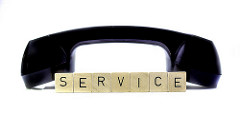Do You Have Call Deflection or Call Accumulation?

Credit: Dennis Skley (CC BY-ND 2.0)
Call deflection is very often used to prove the ROI of community efforts, especially those tied to support. The idea is that, when someone receives an answer to their question in the community, instead of calling you on the phone, you save money because it costs you less to provide that answer. This could also be true for other channels where it might cost you more to offer customer service (email or live chat, for example).
Recently, on the Community Signal podcast, I spoke with Jay Baer, author of a great new customer service book, Hug Your Haters. The book has some really interesting data about how answering complaints in forums boosts advocacy. But another part of the book that caught my eye was when he referred to call deflection as a myth.
“The idea of call deflection used by many large companies to justify the cost of robust social media customer service programs is a myth,” he wrote. “… Customers use of public channels has sky-rocketed, of course, but the growth in the total number of interactions has essentially eliminated the presumed financial advantage of answering customers in less expensive digital places.”
Jay was talking about social media customer service in general here, and not just that which occurs in online communities, but I think he makes a really interesting point worth thinking about. Which is that, unless you are unifying your data so that you know when someone calls you and when that same person posts a question in your community, you might not have call deflection. You might have call accumulation.
“What happens today is somebody calls and they didn’t like the answer, so now they tweet,” he explained when I asked him about it on the show. “Or they email and it takes you too long to respond to the email, so now they go to Facebook or they post on a forum. And so, what used to be one customer contact, now becomes two, three, four; because channels proliferate and consumers will keep selecting different channels until they get the answer they want to hear.
“And so, you don’t see call deflection. You just see call accumulation – contact growth – but it’s spread over more places. That’s really difficult, and that’s one of the things that’s very, very disruptive about customer service today. I concur, that while eventually, you’ll start to see some cost efficiencies as people start to use online channels, social media and beyond as their primary point of contact, instead of secondary, there will be some cost savings for organizations. But that’s not why you should do it.
“It’s not like, ‘Hey, let’s do this so we can spend less time in customer service.’ It’s, ‘Hey, let’s do this so that customers have a better experience with us.’ And frankly, right now, the opportunity is, ‘Let’s do this because our competitors aren’t, and we can use this as a differentiation strategy to say, ‘Hey, the guys down the street, they want your money but they don’t care about you. We want your money and we care about you, so you should work with us.” Customer service is a legitimate differentiator right now. Communities are, of course, part of that.”
It’s not that call deflection isn’t a thing, but instead that we shouldn’t rush to claim we have it, if we’re really not sure. Unifying the data is the key.
